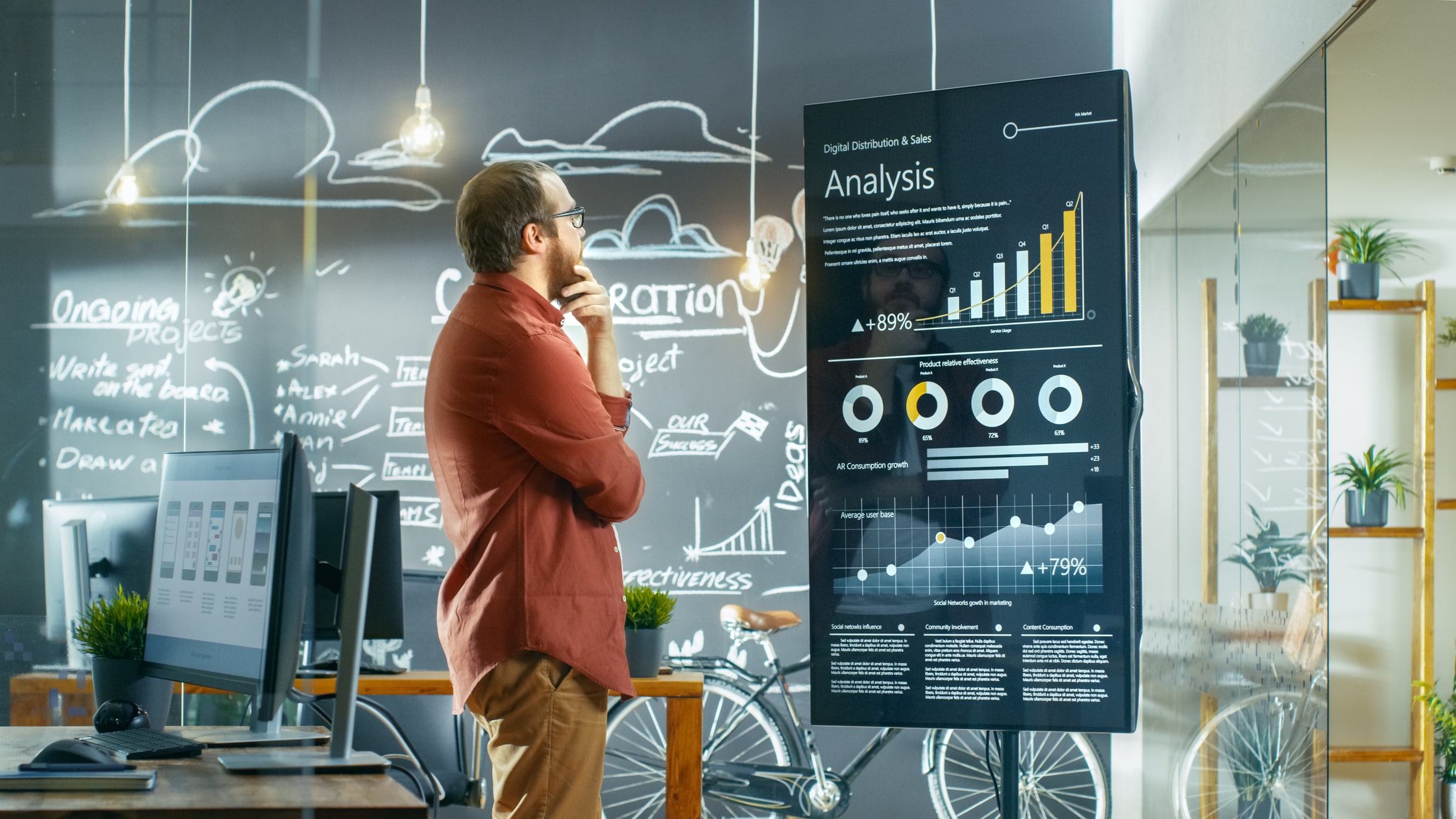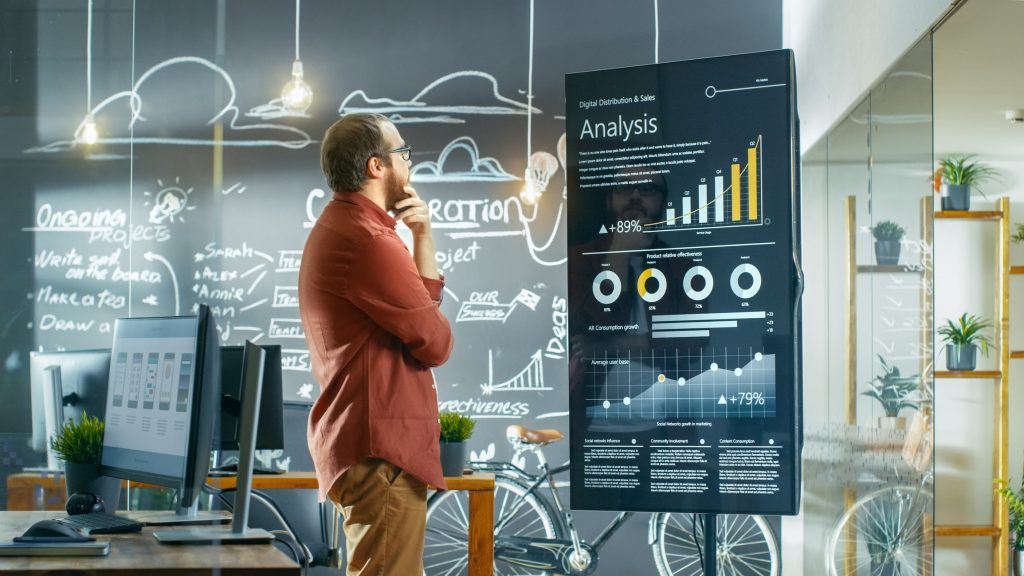Changes? We’ve had more than a few in 2020. In this article, we’ll examine the impact COVID-19 had on the convergence of business, analytics, and AI – and consider what to expect in 2021.
It seems like 2020 can be divided into two distinct halves: before and during the COVID pandemic. A fortunate few places seem like they have this pandemic under control, and we hope that stays. For most of the world, though, moving into an acceptable new normal is still for an unspecified time in the future.
It’s no secret that COVID-19 propelled certain areas – like remote work, videoconferencing, online shopping, and streaming video providers – into new heights. In most cases, though, the technology and interest were already there; it simply ramped up at a much higher rate than projected. We can add data analytics and AI to this list; COVID-19 data visualizations and predictions have been media coverage staples for months. Everyone, one article pointed out, has become something of a data scientist as we all scramble to keep up with the latest on the virus.
Still, we can definitely say that this year took some very unexpected turns. In this post, we’re going to look back over the chaos of 2020 and answer three questions:
- How were AI and data analytics viewed before the pandemic?
- How did the pandemic change AI and analytics?
- How did companies use data to cope with the COVID crisis?
We’ll start with the pre-pandemic outlook.
How Were AI and Data Analytics Viewed Before the Pandemic?
At the end of 2019, VentureBeat reported that AI startups were on pace to break funding records. Businesses and governments alike were awake to the potential benefits of AI. Technology that made data analysis easier and more affordable – such as voice-activated Natural Language Processing research assistants and various analytics tools delivered via the Cloud-based Software-as-a-Service model – were proliferating.
In short, 2020 was looking like a good year for data science even before the pandemic began to make its presence felt.
How Did the Pandemic Change AI and Analytics?
Forecasting demand, managing supply chains, and keeping tabs on consumer behaviors all changed during the pandemic because there were very few (or no) precedents for what we were facing; the historical data and business rules underlying many models just didn’t apply any more. New data sources – and with them new strategies – had to be deployed to survive the ensuing chaos.
Thus, we saw companies who previously had little experience with AI and analytics start leveraging it to find current data, revise their forecasts, identify and fix supply chain problems, and get in sync with customers’ immediate needs. In the past, this kind of change would have taken months or years, but COVID-19 ensured that the timeline was considerably compressed.
Companies who had already rolled out some kind of analytics initiative also had to make changes. For them, the COVID impact was about quickly reprioritizing business goals, adjusting course, and rebuilding what wasn’t working on their existing models.
In both cases, the impact of COVID-19 on data analytics was essentially the same: it was an irresistible driving force, speeding up planned changes and prompting the quick adoption of new paradigms.
How Did Companies Use Data to Cope with the COVID Crisis?
There are many ways that companies across industries utilized AI and analytics during the pandemic. Over the last nine months, our blog has regularly covered how tech can help companies survive, recover, and adapt to the new normal. We won’t go into all the details again here, but we can summarize it this way: Using AI to understand the changing trends associated with COVID peaks and valleys is essential. Below are some of our posts that demonstrate how companies of all kinds can use technology to survive and even thrive during COVID:
- AI: First Aid for the Travel & Hospitality Industry
- Breaking Through the Noise: Predictions About Consumers in the New Normal
- CPGs Are Using AI to Fight COVID-19 Uncertainty
- E-Commerce: Using AI to Lead in the New Normal
- Retail: Applying AI to Ramp-Up Trade Promotions During COVID-19 Recovery
- AI and Retail Strategy: A Post-COVID Playbook
- Understanding COVID’s Enduring Impact on Brand Perception
- Using Digital Twins to Adjust to COVID’s New Normal
- Telecoms, AI, and the COVID Crisis
Now, there’s one question left, and that’s to do with the future. What can we expect in 2021 for AI and data analytics?
What Will 2021 Bring for Data Analytics and AI?
McKinsey recently designated five ‘areas of opportunity’ that will be vital in the post-COVID world: digital, organization, resilience, sustainability, and transformation. We believe AI and other leading technologies are integral to all these areas. As customer-driven marketing, uber-flexible supply chains, remote work, and other COVID-accelerated changes continue and evolve, so will AI and data processing/analysis systems. As businesses continue to develop their own agility, they’ll also turn to AI to enhance their workers’ efficiency and potential. And as we continue to grapple with the changes and long-term effects of the COVID pandemic, we’ll rely on data to guide the way forward.
Related Absolutdata products and services: AI & Data Sciences, NAVIK MarketingAI, Marketing Analytics, NAVIK AI Platform































